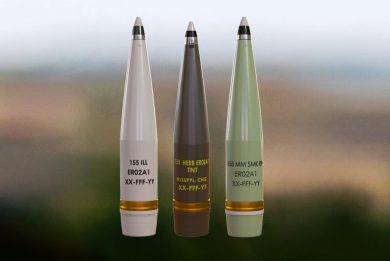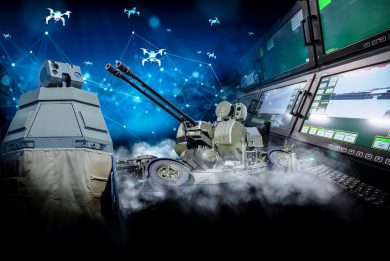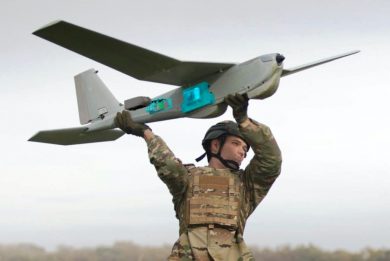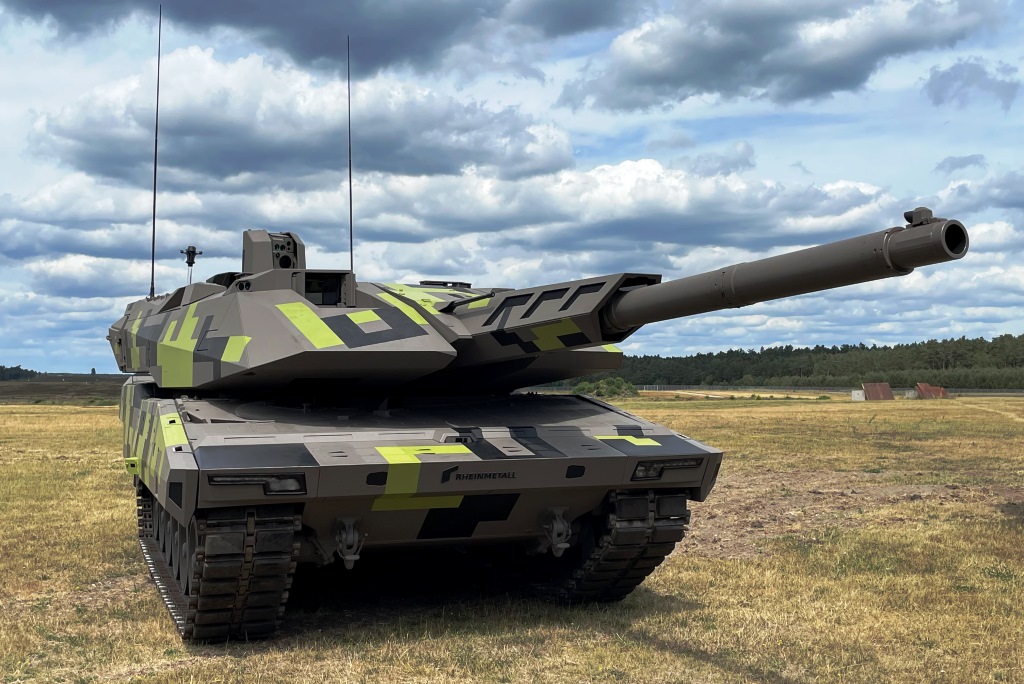
Sharing situational awareness and operational picture
Mobility, protection and firepower are definitely not enough to make a good tank, sensors of various kinds coupled to computers able to distribute all data to the right subsystem or the right crew member are crucial to carry out the mission. Not only the commander and gunner need to see at long range potential targets, they also have to survey what is going on at much closer range all around the platform, while to accurately fire the main gun a series of data must be fed into the firing computer.
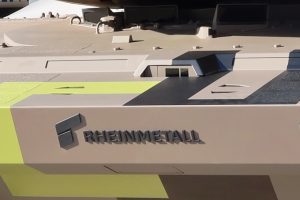
Rheinmetall Electronics is the company branch that is in charge of all Panther/KF51 vetronics, “On new MBT we installed the first digital see-through-armour system that allows to see day and night through the vehicle thanks to a fused sight, which also allows decamouflaging,” Christoph Meyer, Head of Sales and Mission Systems, Dimension Land, Integrated Electronic Systems, explains. The 360° situational awareness system is based on modules of which thousands are under contract while many are already in service on different platforms, such as German Pumas, Australian Boxers and Hungarian Lynx. Six of those modules are installed around the turret, front, mid and rear on both sides to cover 360°, providing any crew member with the required images duly processed by the video processing unit located at the back of the turret crew compartment. “We also have an app based on Artificial Intelligence capable to detect enemy activities, the open architecture of the system allowing us to implement new functions developed by third parties,” Christoph Meyer adds. As seeing around is not enough, acoustic gunshot location sensors and laser warning systems are also integrated on the turret, allowing enemy fire detection as well as laser rangefinding or illuminating activities. After having been treated by specific computers, all information are fused into the central computer and made available to the whole crew “using a very easy human-machine interface, trying not to overload the ability of the single crew member,” Mr. Meyer states. He also adds that radars should be added in order to provide drone detection; EDR On-Line understood that flat panel AESA antennas might well be installed around the turret to provide full hemispherical coverage, complementing the visual 360° system in locating incoming drones and to share information among the unit. EDR On-Line understood that muzzle flash detectors are also sensors that might be integrated to further increase warning.

All sensors that have an influence on shooting, meteorological, navigation data allowing to provide exact location to take in count the Coriolis effect, and so on are processed in the fire control computer located front-left in the turret, which is connected to the gunner and commander sights both installed on the right side of the turret. EDR On-Line understood that Rheinmetall installed a new fixed digital bi-ocular sight for the gunner, while a new commander sight is currently under testing at WTD 81, with a dual thermal channel that includes both a MWIR and a SWIR sensor, the latter considerably improving visibility in fog. Coming to navigation, the Panther/KF51 is obviously fitted with GNSS systems but is also able to operate in GNSS-denied areas. EDR On-Line understood that Rheinmetall is developing an image-based system that can exploit images provided by cameras comparing with digitised maps data, to provide an accurate fix that updates the inertial navigation system, should satellites signals be jammed or spoofed. “In our fire control computer we run a series of software that minimise the sensor-to-shooter time gap. Usually both the gunner and the commander have to continuously observe the battlefield area, one looking for enemies identifying them, while the second is fighting them, working either in the killer-killer or hunter-killer modes. In the Panther we added pixel-changing software that allows detecting enemies exploiting AI algorithms, putting on the enemy icon a tracker symbol,” Christoph Meyer explains. In the past, pixel-changing algorithms were working only when the platform was static, but now computing power and AI algorithms allow detect changing even with the tank on the move, albeit at reduced speed, EDR On-Line understanding that the aforementioned system works up to around 20 km/h.
All information gathered at platform level are fed into the Battle Management System, which also have inputs from higher echelon as well as from other platforms. All this is of course supported by a complete communication suite, based on digital radios and optimised antennas, the latter not only for connecting manned platforms but also for monitoring UGVs and UAVs activities as well as for keeping a data link with loitering munitions. Rheinmetall Electronics is capable to provide the customer with the right information taken from the BMS and fed into the mission system, providing them to the crew. Here too algorithms are used to lower as much as possible the crew workload. R&D activities are ongoing in Germany in order to improve ergonomics, providing data in the best possible way through the HMI, while a lot of experience is being gained with the various export programmes that involve the company.
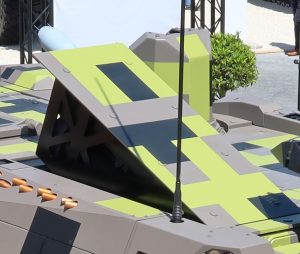
Loitering munitions are multiple fold; they are a threat, therefore they are dealt with in the survivability article, they are also effectors, hence they are part of the lethality package, and in the latter case they must be integrated, therefore they are also part of this article as they must be integrated in the tank electronic environment. “Our Advanced Mission Pod has a standard interface allowing the use of loitering munitions as well as UAVs, and has the same size of the antitank missiles pod used on our Lance turret,” Christoph Meyer explains. It should also equip the German Army Schwerer Waffenträger Inanterie, the Heavy Infantry Weapon Carrier based on the Boxer 8×8 fitted with a 30 mm turret also equipped with Spike missiles.
Some spare volume at the back of the turret can also allow embarking short range UAVs. This might be a different installation from that seen on Prototype 1 at Eurosatory, where those small VTOL UAVs were located on the turret side. These will be fully integrated, therefore their images will be seen on the crew station screens. “A menu will allow to plan the mission, to launch UAVs and to controlled, the software being embedded into the on-board computer system,” Christoph Meyer says.
Coming to the UAVs business, Rheinmetall underlines that it is looking at very specific applications, and especially at vehicle integration while it is not aiming at entering the infantry UAS market. At Eurosatory it was possible to see the Panther fitted with some small quadcopters, known as Stinger, hosted in the outer part of the turret. In the company booth a MissionPod was exhibited that hosted such UAS, and it was compatible with the missiles pod of the Rheinmetall’s Lance turret. Beside Stingers the pod also hosted a bigger reconnaissance quadcopter. While the Stingers are expendable, launched thanks to a pneumatic system, the bigger drone was designed to be re-used, being capable to land in the pod when back from its mission and reload its batteries, which ensure a 50 minutes autonomy. As for the Stingers, information obtained in Paris called for a 20-30 minutes flight time, a 90 km/h maximum speed and a 200 grams payload, possibly a small warhead. Both airframes were developed in cooperation with Berlin-based BärDrones, showing the intense work done by Rheinmetall with MSEs.
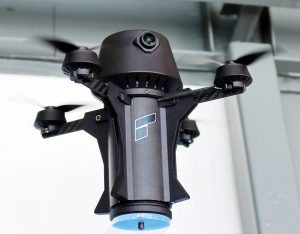
In Berlin Rheinmetall confirmed that these UAS will definitely be transformed into a light loitering munition, in cooperation with UVision of Israel, the German group having inked an agreement with that company, and the product will be known as HERO-R. EDR On-Line understood that the Hero-R Loitering Munition will be available in different configurations and in different sizes. For one of the versions, the Hero-30 warhead will be used; this has a weight of 500 grams, and will therefore require a bigger UAS compared to the proof of concept demonstrator seen in Paris.
The UAS MissionPod displayed at Eurosatory 2022 was developed according to requirements for the integration into the Rheinmetall Lance turret. From the onset it was designed to be modular and be able to host different UASs, in different numbers depending on their size. The technology for integration those UAS will be used for other vehicles, such as the KF51 Panther, but as the available space for integration is different in each vehicle, also the MissionPod will look different. Thus the exact number of UAS to be integrated into each vehicle type will depend on the available space and the choice of reconnaissance UAS versus Loitering Munition. A prototype is being developed that will allow take-off and landing of the recce UAS, main issues being the small surface for landing and the fact that the platform might not be horizontal. A demonstration of the reconnaissance drone launch and recovery capacity is planned in late 2023.
All sensors, command and control, communications, etc, are interconnected thanks to a fully digital NATO Generic Vehicle Architecture. “When we say that the Panther has a real open digital architecture this is not the same message we were giving ten years ago, because we spent time working on interfaces, hardware, software and electronic, and it is closer to plug-and-play than everything existing at the moment,” Dr. Alexander Kuhrt, Vice President Next Generation Main Battle Tanks at Rheinmetall Landsysteme, said adding that this would allow fairly straightforward in-service support as well as upgrades explaining that the areas where more innovation cycles are expected have been identified, the design team concentrating its efforts on those areas in order to avoid the need to redesign them in the future. “The NVGA is also a key enabler for AI-based automation and the optimisation of task management, as well for safety and security, ensuring the physical separation of data and safety signals, providing a cyber security certification option, which is very much customer-dependent,” Dr. Kuhrt said, this also allowing integrated HUMS status monitoring and test system, as well as on-board analysis, enabling fleet management and predictive maintenance.
Rheinmetall unveiled that at its Bremen facility some early development programmes are ongoing that might be integrated on the Panther as soon as ready. Those algorithms are mostly aimed at reducing the crew workload. Although not clearly stated, some of those might well be related to the use of “wingman” UGVs and UAVs, an air defence UGV sketch being visible in one of the slides, connected to the MBT via the combat cloud; this was however defined as “concept design”, something that is not (yet?) in the company portfolio, reconnaissance, mine breaching, flank protection, and NLOS support being among the other missions that might migrate from manned to unmanned platforms. Controlling or monitoring those potential robotic assets would be one of the possible tasks of the fourth crew member, located front right, who might also be a company commander in charge of coordinating the mission not being engaged in the tank handling. On that Rheinmetall stated that, “Discussions are ongoing with different armies to find out how this extra-position fits into their concepts of operation.”
Photos courtesy Rheinmetall and P. Valpolini

